Lilacs are a beautiful plant to grow, with big bunches of colourful flowers. In this short(ish) guide, you’ll learn the ins and outs of growing lilacs so you can enjoy them at home.
While the name lilac can refer to the genus of 12 species of plants in the olive family, when most people say lilac, they’re talking specifically of the common lilac, Syringa vulgaris.
This plant seems to have its origins in the middle east and was brought to Europe by the Ottomans. This lead many botanists to believe that it was native to the Balkan peninsula.
Eventually, it spread beyond the Balkans and can now be seen growing all across Western Europe and the United States, due to its popularity.
It was named in the 18th century by famed Swedish botanist and taxonomist Carl Linnaeus. The genus name Syringa is derived from the Greek word for pipe or tube syrinx (think syringe). The species name vulgaris comes from the Latin meaning common (think of the modern English usage of vulgar)
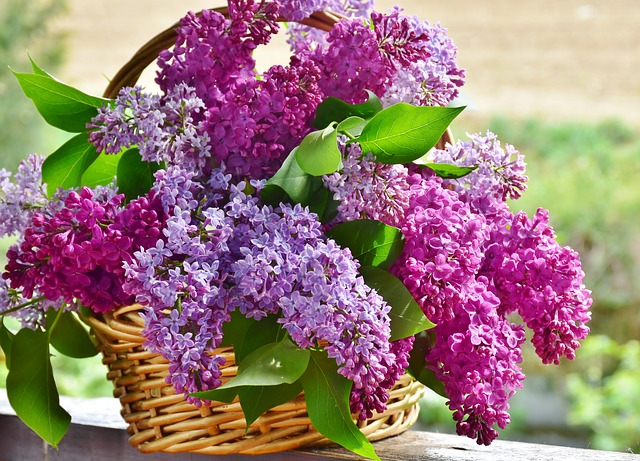
They’re often referred to as trees, which might seem correct enough since that is what they do resemble, but technically they’re considered large shrubs.
It might seem strange to see a shrub that grows 6-7 metres in height since shrubs are usually considered to grow low to the ground, but botanists do consider it to be a shrub rather than a tree.
Lilac bushes are considered quite fast growing as well, with typical growth rates being about one foot per year.
While their root systems tend to not grow deep, they do like to spread out from the bush quite a lot, so you need to be careful where you plant your bush. Some people have found that lilac roots tend to invade nearby septic tanks for example.
Lilacs are also known for their scents. While common lilacs that we are describing here are said to have an intense, almost spicy scent, other varieties have completely different scents. Love for them isn’t universal, with some people finding the scents of some species almost offensive.
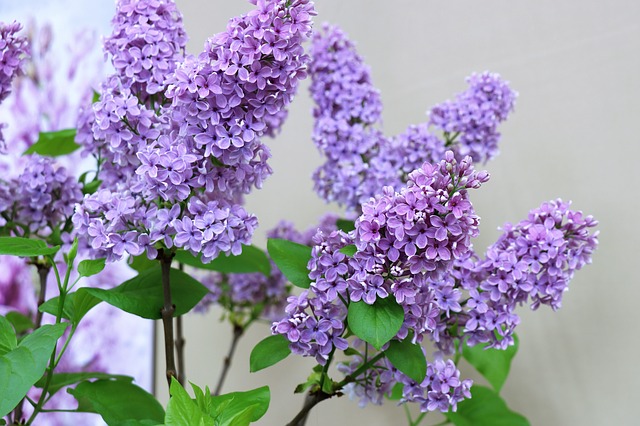
Varieties of Lilac
In addition to the common lilac, there are several other species that people often grow.
One of the more popular species is Syringa meyeri, or the Korean Dwarf lilac. Rather than growing several metres tall, they grow to just over one metre, making them perfect for turning into hedges.
Another popular species is the Syringa Persica, or the Persian lilac. This is a hybrid plant and while it’s larger than the Korean dwarf, it’s still quite a lot smaller than the common lilac, making it very suitable for modern gardens.
One downside to the common lilac is that they only bloom once a year. So if you’re a fan of lilacs and want to see them bloom more often, you might want to check out a newer model such as the Bloomerang lilac, which was introduced in 2009.
How to Grow and care for lilacs
Growing Lilacs from Seeds
Can you grow lilacs from seeds? Yes, you certainly can. While the process itself is not too complicated, the biggest downside is that it can take several years to have trees that bloom. So this following method is really only for people who consider themselves hardcore green thumbs.
The first step is to soak the seeds in water for at least 12 hours to soften them and prepare them for the next stage.
Next, place the seeds in a bag along with some perlite and then refrigerate the seeds for a couple of months. This is to imitate the conditions during Winter so that the seeds are ready to sprout come “Spring”.
Now that “Winter” has come and gone, it’s time to plant the seeds in containers. Fill your container with seed-starting mix, plant your seed and then place the container somewhere where the temperature will be constant and not extreme.
After a month or so you should begin to see some signs of growth and once the roots begin to outgrow the container it’s time to transfer the seedlings into a bigger container. Once they grow large enough to plant (at least several inches high) then you can plant them in your garden.
This is quite a laborious and time-consuming process, so if you’re just interested in having lilacs in your garden then there are quicker ways to go about it.
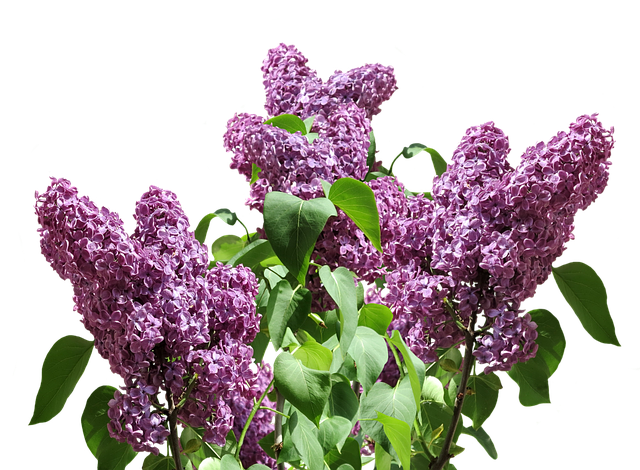
Image by KreativeHexenkueche on Pixabay
How to Plant, Grow & Care for Lilacs
If you’re not patient enough to grow lilacs from seeds, then growing them from a small plant makes a lot more sense.
The best time to plant lilacs is in either Spring or Autumn.
To plant them, dig a hole in your garden slightly deeper than the container that your lilac came in. Spread the roots out around the plant and then fill the hole with topsoil, watering as you go to keep the root system moist.
How far apart to plant them depends on the variety of the plant. The smaller dwarf lilacs can be planted about 1-2 metres apart, while the larger varieties should be planted about 4-5 metres apart.
A good rule of thumb is to take the expected height of the tree and plant them that far away from each other.
In terms of soil, you’ll need to make sure that your soil is well drained and contains plenty of nutrients. They typically don’t do well in clay soil, so you’ll need to do a bit of work if your backyard is full of clay.
As far as climate goes, Australian growers should generally be fine since lilacs grow everywhere without extreme temperatures either hot or cold.
Be sure to plant them somewhere that gets plenty of sun; six hours a day is preferable. Lilacs will grow in spots with less sun but they won’t bloom as well.
Speaking of blooms, if you’ve done everything else right then you can expect to see plenty of flowers blooming in mid-Spring, although other varieties bloom at different times.
Can you grow lilacs in containers?
Because of their sheer size and root systems that love their freedom, they can be hard to grow in containers or indoors. It’s possible to do so if your container is large enough and the variety is small enough, but generally, lilacs are considered too difficult to constrain in a container.

Caring for Lilacs
Lilacs are pretty hardy plants, but there are a few things you can do to keep them in the best shape possible so they bloom as well as possible.
To start with, each Spring add a thin layer of compost and mulch to help keep the root system moist. This also has the added benefit of keeping the ground free from weeds.
In Summer, if you live in an area that doesn’t get much rainfall then you’ll want to make sure that you water your lilacs regularly.
In Winter you can add a little bit of fertiliser if you want, but over fertilising will cause the plants to stop blooming, so you need to take extra care if you’re not confident in what you’re doing.
How (and when) to Prune Lilac Trees
Lilacs, like many flowering plants, require annual pruning to keep the blooms at a maximum. This is to funnel all the plant’s energy into the flowers rather than into creating more canes.
The best time to do this is in late Spring after the tree has bloomed.
When pruning, start by removing any dead wood and any small suckers that have appeared at the base of the tree. These suckers aren’t likely to become anything interesting and are only taking up energy that could be used by the flowers!
As long as your lilac is still flowering well, you don’t need to go overboard with the level of pruning. However, if it is not flowering the way it once did, a more severe pruning may be required.
If you find yourself with lilacs in this condition, the only way to revive the tree may be to cut the tree down much more. This does mean that it will be some time before the tree blooms again, but it may be your only option at certain times.
Deadheading is the removal of dead flowers throughout the blooming season and is something that can be done to improve the yield of the plant. That said, deadheading lilac trees really only seems to be beneficial if done early in the life of the tree.
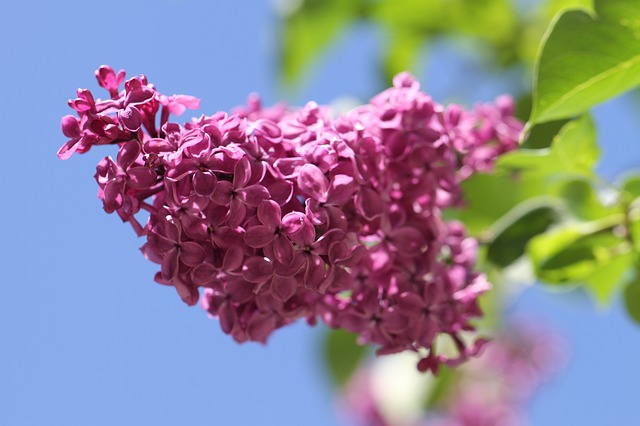
Dealing with Pests & Diseases
As with almost any type of plant, dealing with pests and diseases is another thing to concern yourself with.
Fortunately, lilacs are very hardy and it’s unusual that a tree is completely killed by a simple pest or disease.
That said, there are a couple of things to watch out for.
Firstly, slugs and snails seem to have acquired a taste for lilacs, so if you notice these guys on your trees, you’ll want to make sure that you deal with them by using appropriate treatments.
Next, powdery mildew is a disease that affects lots of plants and lilac isn’t an exception. However, where powdery mildew can slow down the growth and even be deadly to certain types of plants, it won’t kill your lilacs.
It might be ugly, but it’s not serious enough to warrant any worry.
FAQ
Q: Why won’t my lilac bloom?
A: The most common reason that your lilac won’t bloom is that you have over-fertilised it. Other issues could be lack of sunlight or poor soil conditions. Go through the above guide and make sure you’re following all the best practices to try and diagnose exactly what’s going on.
Q: How to stop lilac bushes from spreading?
A: The key to stopping lilac bushes from spreading is to get rid of the suckers. These guys are the ones that cause lilac trees to spread all over the place, so tearing them out of the ground will stop the spread for good.
Q: Are lilacs poisonous to cats?
A: No, lilacs are not poisonous to cats. Cats can be poisoned by lilies on the other hand. This is something too few people know about.
Q: Are lilacs poisonous to dogs?
A: No, lilacs are not poisonous to dogs.
Q: How long do lilacs bloom?
A: Lilacs will generally bloom for two weeks or so.
Q: Are lilacs poisonous to horses?
A: No, lilacs are not poisonous to horses.
Q: Are lilacs edible?
A: Lilacs are safe to eat for humans and pets alike, but they aren’t the best tasting flower, so you probably won’t want to add them to your cooking any time soon. That said, if you’re feeling a little creative, try adding some lilac flowers to your cooking and try it for yourself, you may find you like it.
Q: Are lilacs deer resistant?
A: Lilacs are considered deer resistant. This is not something our Australian readers need to worry about, but North American readers should note that it’s unlikely that deer will eat your lilacs as there are plenty of other plants they prefer to eat when food sources are low.
Q: Are lilacs and lilies the same?
A: No, lilacs and lilies are completely different types of plants. The way they’re spelled might make them look like they’re the same, but they’re different. If you saw a picture of each of them next to each other you’d never confuse the two.
Q: Are lilacs and lavender the same thing?
A: No, lilacs and lavender are not the same thing. It’s easy to see why people would confuse the two since their flowers are both a lovely purple colour, but that’s about where the similarities end.
Q: Do lilacs like coffee grounds?
A: Yes, lilacs do like coffee grounds, at least to a certain extent. Don’t use coffee grounds exclusively as compost, but making them part of a compost mix can work really well. Some coffee shops will offer customers their used grounds, so next time you’re there ask them.
Q: What do lilacs symbolise?
A: Lilacs are said to symbolise the joy of youth. No one is sure where this meaning came about exactly, but flowers have had a meaning of their own for quite a while.
Q: Are lilacs acid loving plants?
A: Lilacs do best when grown in slightly acidic to slightly alkaline soil. So while I’m not sure you could call them “acid loving”, if your soil is slightly acidic then you should be able to grow lilacs without worry.

Have we missed anything?
That’s all we have for you right now. Did we miss anything?
If there’s something you’d like to know about lilacs, then let us know in the comments and we’ll do our best to add it to the guide.


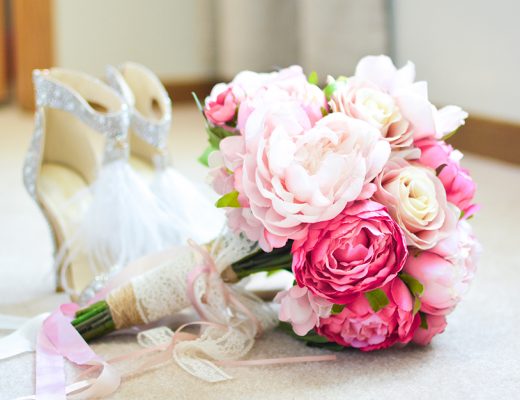
Phoebe
May 8, 2019 at 5:28 amWhat colors can Lilacs be? Is there such a thing as a yellow variety?
Sean
May 8, 2019 at 1:21 pmHi Phoebe,
Lilacs are generally found in shades of whites, blues, purples and pinks.
The Primrose Lilac has a yellow flower though.
Hope that helps!
Breeza
August 13, 2019 at 2:54 pmJust purple
Clara
June 19, 2019 at 12:15 pmLilacs are soo fragrant 🙂 Where can I buy a Bloomerang lilac root here in Australia?
Sean
June 25, 2019 at 1:14 pmHi Clara,
That’s a good question. A quick Google search didn’t yield much for me, you might be better off talking to someone at your local nursery?
😝😝😝😝😝😝😝😝😝😝😝😝😝😝😝
August 13, 2019 at 2:53 pmHey thanks
What are some of the allergy symptoms of a lilac flowers
And do they spread a disease
Jennifer Anne Michelson
September 27, 2019 at 3:57 pmThat’s all so interesting. I looked out my window from upstairs down into the back garden and I saw some purple flower growing out of a tree fern that I intend getting rid of. I raced downstairs and to my delight my over-run weedy garden had let an ancient and forgotten lilac grow up through the tree fern. Due to zealous weeding, I had probably been cutting the new suckers out for the past 11 years. I am absolutely thrilled that I have a Lilac Plant now which I will love and tend to forever after ! Jenny Michelson, Bilgola, Sydney
Taisia Voronova
October 22, 2019 at 7:21 pmJennifer, can I get some cuttings from your tree, please! It is my dream to grow lilac, I have tried to grow from seeds with no success, now I have bought a cutting from Garden Express, http://www.gardenexpress.com.au, but have a doubt that it will grow. Please, respond to my email for further communication, will appreciate…
Taisia Voronova, Bexley.
[email protected]
Kate
March 6, 2020 at 3:19 pmHello, I live in Far North Queensland, to top that off the wet tropics but I come from the Barossa Valley, I miss the smell of Lilacs, is there any way I can get one to grow on my property, it would be planted on a slope, but we do get a lot of rain every year.
Sean
March 16, 2020 at 12:29 pmHi Kate,
My understanding is that lilacs are pretty hard to grow in the tropics.
Unless you’re able to help them with their dormancy phase then I’m not sure it’s possible to grow them that far north.
There might be substitutes that can grow instead?
Sorry I can’t be more helpful!
Sue Farlinger
May 14, 2020 at 4:01 amHi. I am wondering about taking cuttings from lilacs. When and how?
Sue
Sean
May 14, 2020 at 11:09 amHi Sue,
It’s possible to take cuttings from lilacs but it’s difficult, so this might not be something you want to undertake.
This guide from the New Mexico State University has a lot more information for you:
https://aces.nmsu.edu/ces/yard/2005/051405.html
Hope that helps!
Sean
Steven
October 17, 2020 at 7:05 pmIs there anywhere around Sydney where lilacs grow prolifically (specific suburbs, streets, parks, gardens) which can be visited by the public?
Sean
November 12, 2020 at 1:23 pmHi Steven,
I’m a Melbourne boy so not really the best person to ask, but last time I was in Sydney I did see some nice ones in the Royal Botanic Gardens.
I’m sorry I can’t help with specific suburbs or streets.
Cheers,
Sean
Barbara Burrows
October 26, 2020 at 8:36 pmThis year my lilac tree set blooms then did not flower. Now the leaves are curling – it seems to have some terrible disease. How do I treat?
Sean
November 12, 2020 at 1:18 pmHi Barbara,
The first thing to do is to cut away all the infected foliage to stop the infection from spreading any further.
Second you’ll need some kind of spray to kill the infection for good. What spray you need depends on the disease, so it might be easiest to take a picture of your tree and take it down to Bunnings or your local nursery.
Renae
December 26, 2020 at 10:01 amI see so many beautiful lilacs in profuse bloom shown by over seas nurseries and the colours are exceptional and superb. It is very disappointing that they are not available in Aussie. If I am mistaken please let me know. Do you have the rich buttery Lilac Primrose available at any time for purchase – greatly prefering it to be in bloom as a customer that has been cheated to often.
Sean
January 26, 2021 at 6:24 pmHi Renae,
We don’t have those available and if your local nurseries don’t have them either, you might want to try some online nurseries as they often get stuff that’s hard to find.
Good luck.
Sean